Financial audits are critical for ensuring transparency, accountability, and compliance in every organization. But without a structured system, audits can quickly become overwhelming, leading to missed tasks, confusion, or non-compliance issues. The Financial Audit Outline Checklist in Excel solves this problem by providing a ready-to-use, organized, and easy-to-manage template for financial audit preparation and execution.
This Excel-based checklist is more than just a list—it’s a digital audit management system that ensures every task is captured, responsibilities are assigned, deadlines are set, and progress is tracked in real-time. Whether you are a small business or a large enterprise, this template adapts to your needs and provides a professional framework for managing audits seamlessly.
✨ Key Features of the Financial Audit Outline Checklist
✅ Main Checklist Sheet
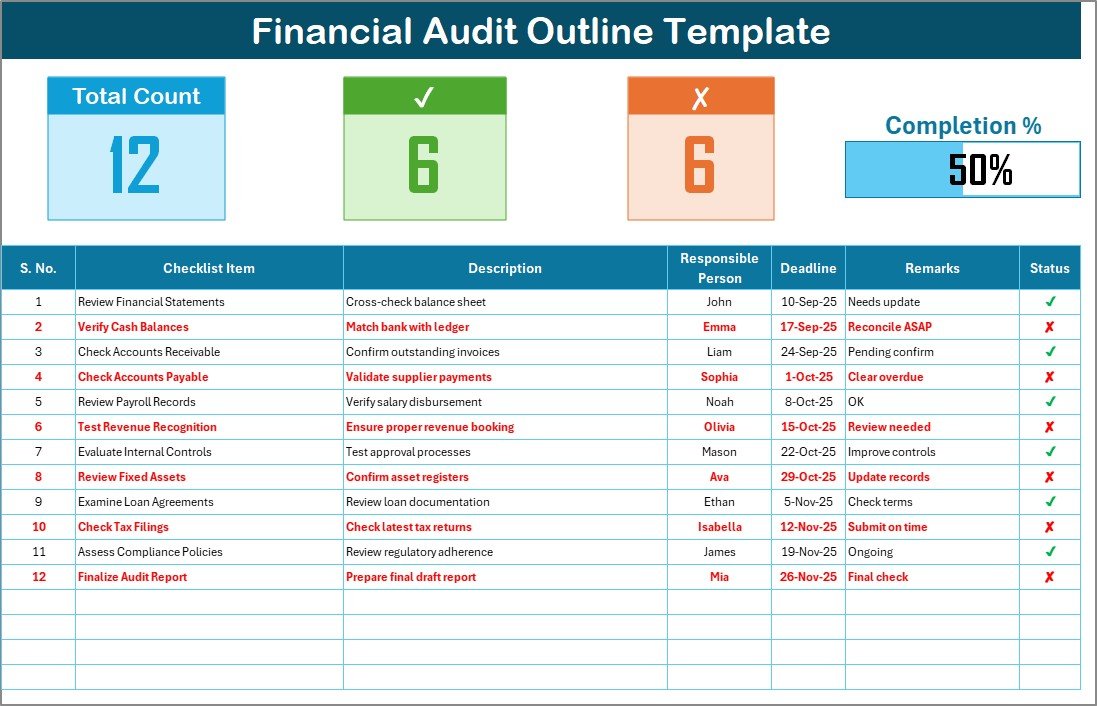
-
Centralized table for capturing all audit tasks.
-
Displays total tasks, completed tasks, pending tasks, and a visual progress bar.
-
Columns include Serial No., Checklist Item, Description, Responsible Person, Deadline, Remarks, and Status (✔ / ✘).
✅ List Sheet Tab
-
Stores a unique list of responsible persons.
-
Supports drop-down menus in the checklist for easy task assignment.
-
Reduces duplication and errors while ensuring accountability.
✅ Progress Tracking
-
Automatically updates counts of completed and pending tasks.
-
Visual progress bar provides instant audit readiness status.
✅ Customizable & Flexible
-
Add or remove audit tasks based on scope.
-
Modify deadlines, responsible persons, or remarks easily.
-
Beginner-friendly—no advanced Excel knowledge required.
📦 What’s Inside the Template
-
Financial Audit Outline Checklist Sheet – The main working sheet with progress tracking.
-
List Sheet – A reference sheet with responsible persons for easy drop-down assignment.
-
Prebuilt Sample Checklist Items – Helps you get started quickly with common audit steps.
🛠️ How to Use the Financial Audit Outline Checklist
-
Download & Open – Enable editing in Excel.
-
Fill Audit Items – Add tasks such as “Verify General Ledger” or “Check Tax Compliance.”
-
Assign Responsibility – Select team members from the drop-down menu.
-
Set Deadlines – Enter realistic completion dates.
-
Track Progress – Mark ✔ when completed or ✘ when pending.
-
Review Progress Bar – Analyze overall audit readiness at a glance.
-
Finalize Audit – Once all items are ✔, share the checklist with auditors or management.
👩💼 Who Can Benefit from This Checklist?
-
Finance Teams – To stay audit-ready and ensure compliance.
-
Internal Auditors – To track responsibilities and avoid missed steps.
-
Small Businesses – To maintain financial transparency without costly software.
-
Large Enterprises – To assign tasks across departments efficiently.
-
Consultants & Audit Firms – To manage multiple client audits.
🚀 Advantages of Using the Financial Audit Outline Checklist
-
Organized Workflow – All audit steps captured in one file.
-
Clear Accountability – Assign tasks with deadlines and responsible persons.
-
Time-Saving – Reduces duplicate efforts and manual tracking.
-
Real-Time Tracking – Progress bar and task counts show instant readiness.
-
Error Reduction – Prevents missing critical steps in the audit.
-
Compliance Assurance – Covers all mandatory financial checks.
-
Customizable – Adaptable for different audit cycles and industries.
📈 Opportunities for Improvement
-
Add conditional formatting to highlight overdue tasks.
-
Link supporting documents (e.g., financial reports, tax filings).
-
Use VBA macros to automate progress updates.
-
Build a dashboard sheet with charts and audit KPIs.
-
Store on OneDrive or Google Drive for team collaboration.
✅ Best Practices for Using the Checklist
-
Keep checklist items short and clear.
-
Update the file regularly during audit cycles.
-
Use colors to highlight urgent or overdue items.
-
Share the file securely with all stakeholders.
-
Archive completed checklists for compliance history.
-
Break long audits into phases for milestone tracking.
🏆 Real-World Applications
-
SMEs – Use it to prepare for external audits.
-
Corporates – Manage cross-departmental audit responsibilities.
-
Nonprofits – Maintain donor trust through transparent financial reporting.
-
Consulting Firms – Apply it across multiple client audits.
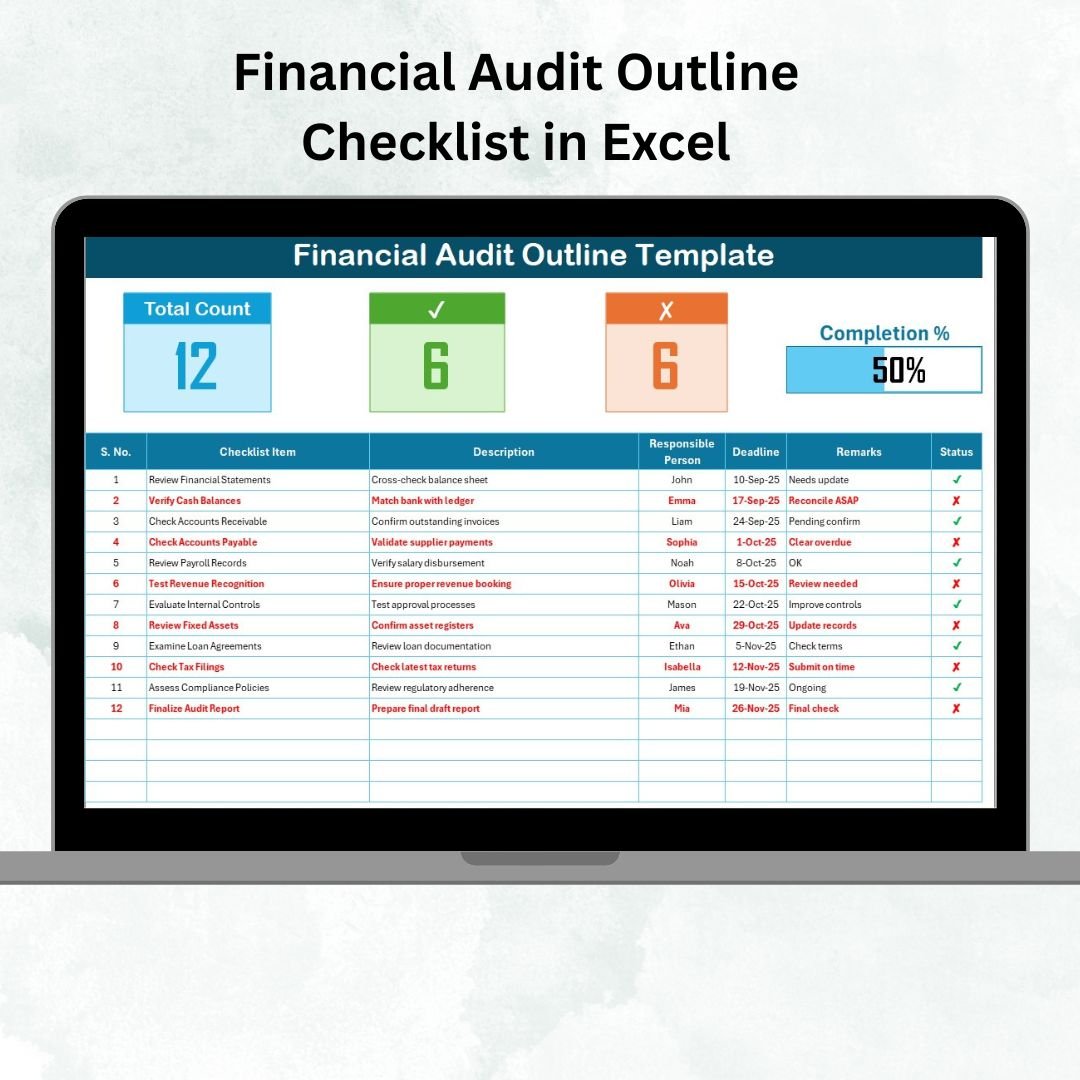
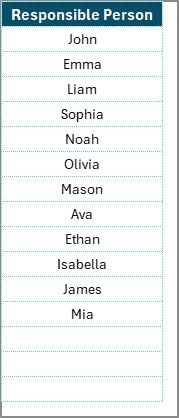

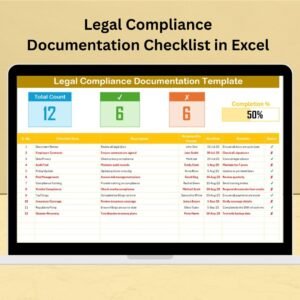


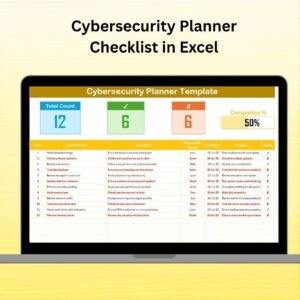
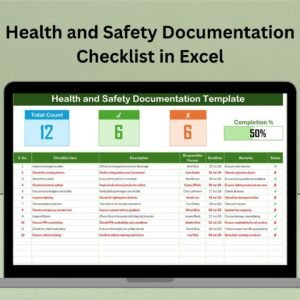

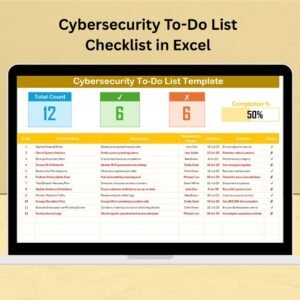


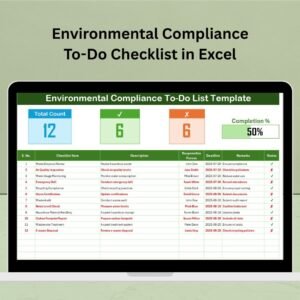
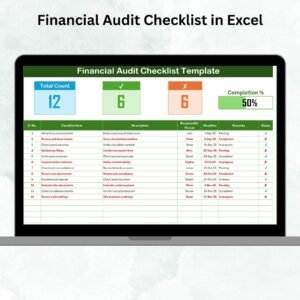

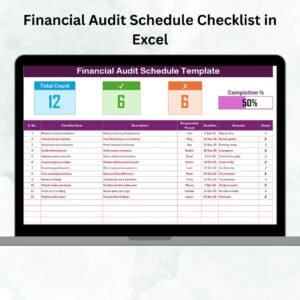

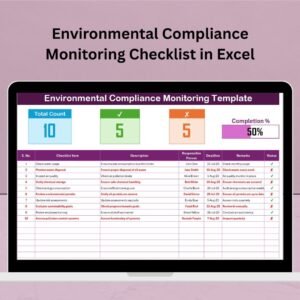
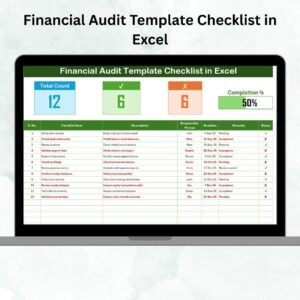

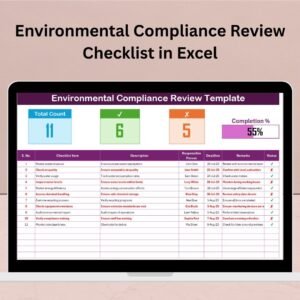
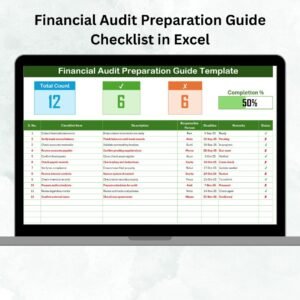
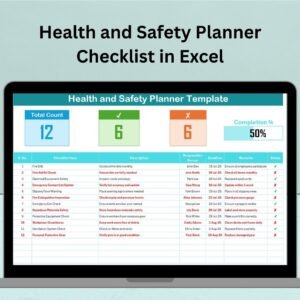
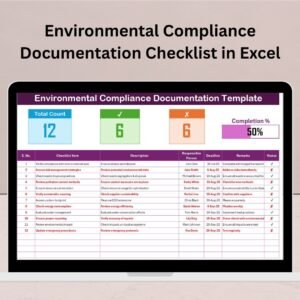
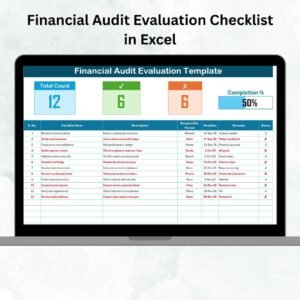
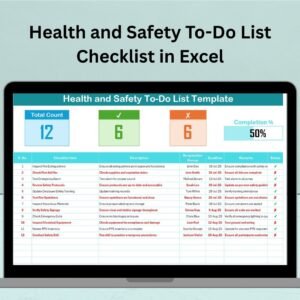

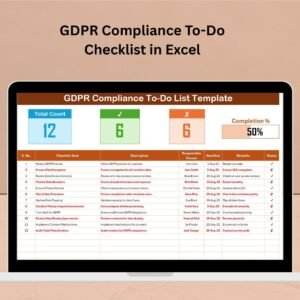
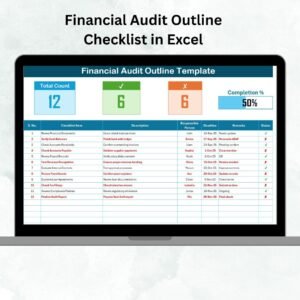
Reviews
There are no reviews yet.